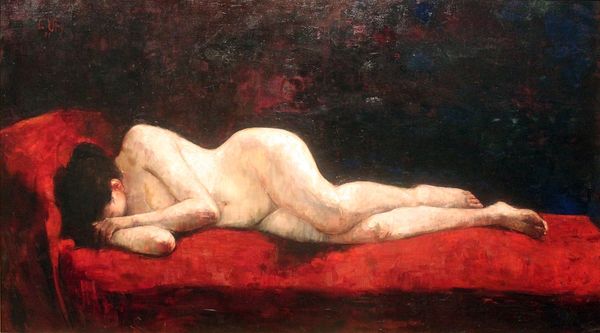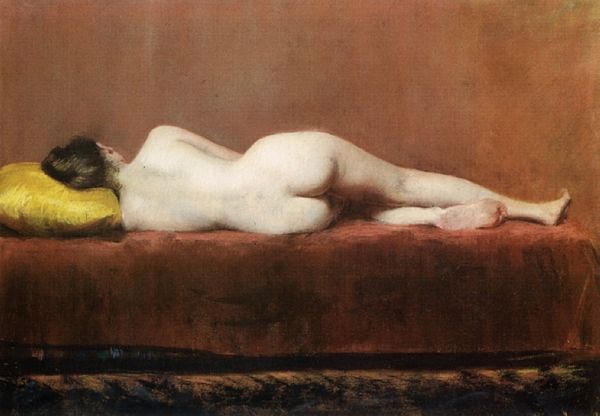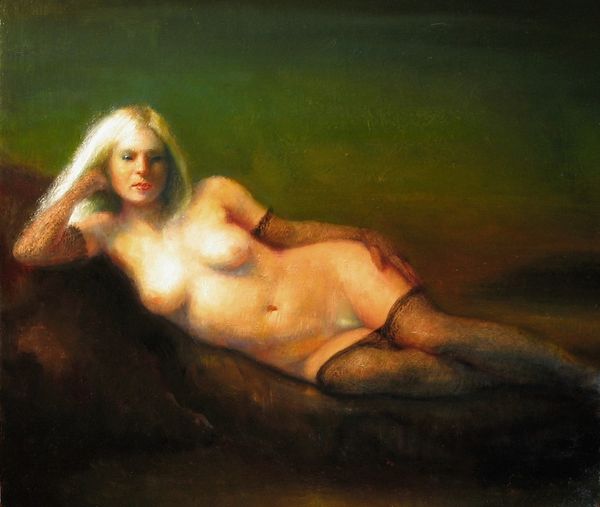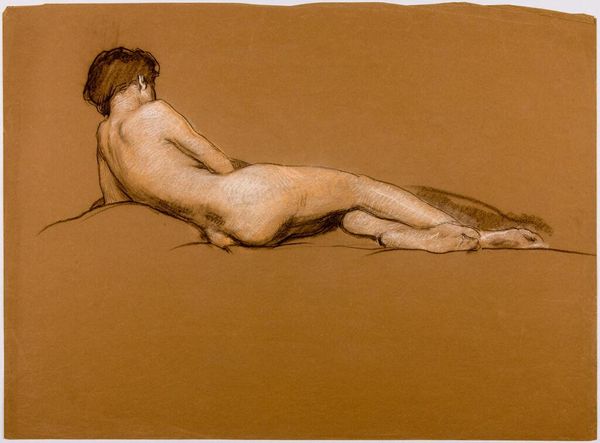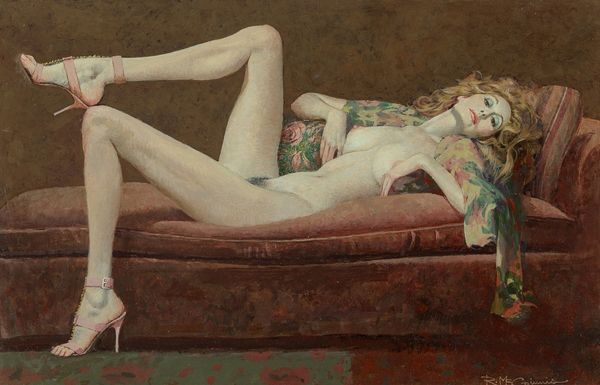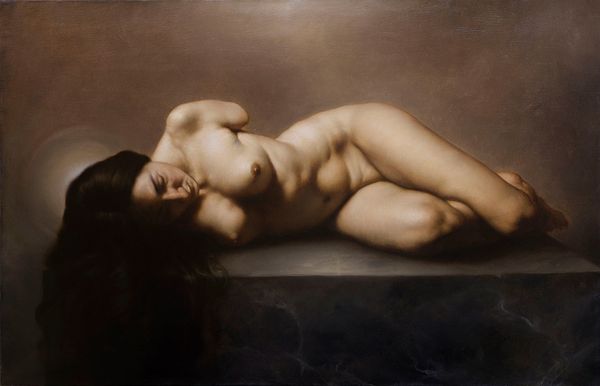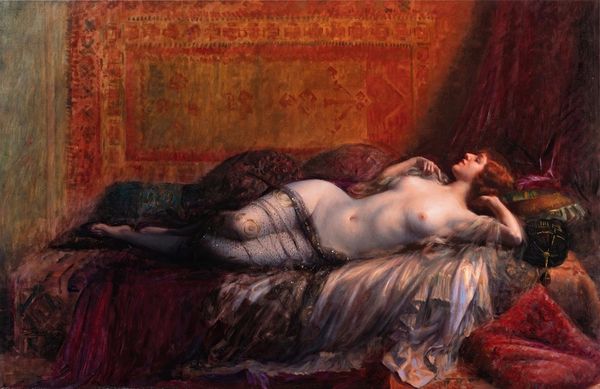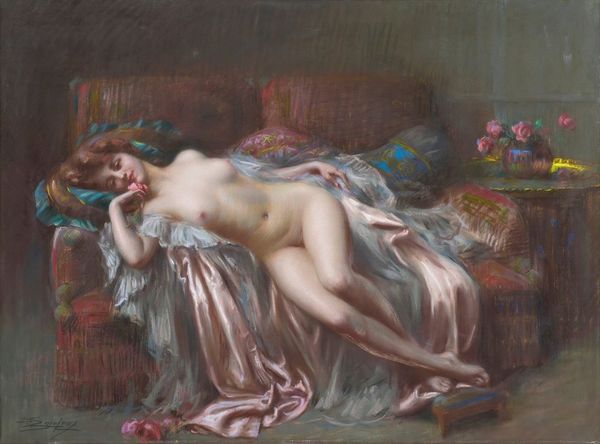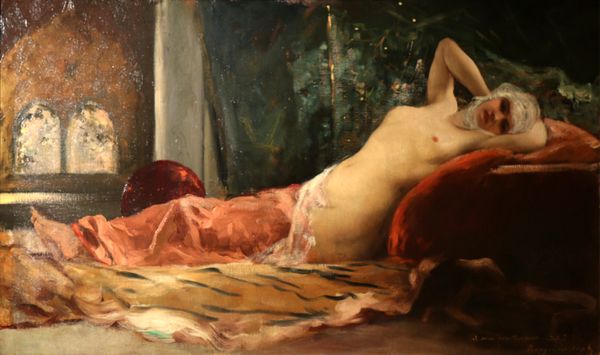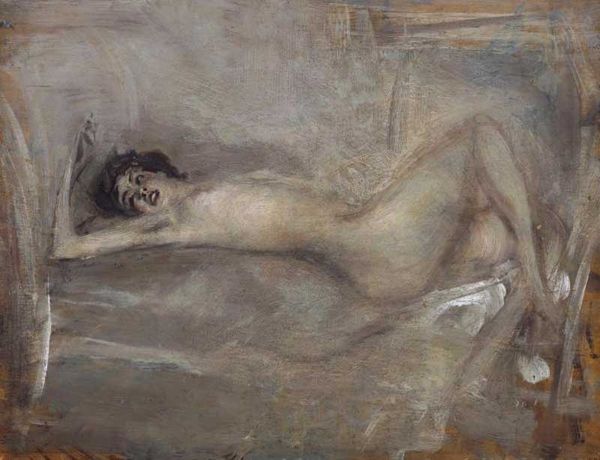
painting, oil-paint
#
figurative
#
painting
#
oil-paint
#
figuration
#
oil painting
#
romanticism
#
genre-painting
#
nude
Copyright: Public Domain: Artvee
Curator: This oil-on-canvas work is called "Study of a Female Nude" by William Etty, a British artist associated with the Romanticism movement. What’s your immediate impression? Editor: The dominance of warm tones – primarily reds and yellows – gives it a rather sensual, intimate feeling. The brushwork seems quite loose and expressive, which amplifies the sense of immediacy, doesn't it? Curator: Indeed. The positioning of the reclining nude also plays into established visual tropes of Venus and other recumbent goddesses. But there’s also an informality, a raw realism in the model's pose, devoid of any romanticising idealization. Editor: It's almost as though Etty wanted to capture a fleeting moment of private reverie, and the earthiness of the color palette suggests a primal connection, almost like recalling an ancient memory or dream of femininity. The painting lacks crisp edges; the forms softly merge and fade into their background, contributing to this atmospheric effect. Curator: This blending may evoke the Romanticist longing for simpler, mythical eras, aligning with archetypes deeply embedded in cultural memory, hinting at woman as temptress or mother figure. But these are universal stories we've been telling for millennia. The lack of distinctive attributes makes the female form open for cultural projections of this symbolism. Editor: The painting feels surprisingly contemporary for this theme. The sketchy quality reminds me of Degas, the reduction of light playing on shapes in space, prioritizing pure observation over anecdote. We focus on surface materiality, an indexical representation of being a woman rather than just making allegorical claims about woman. Curator: It shows how these archetypes evolve— or dissolve. As societal expectations shifted during the Romantic era, representations of the female nude evolved as well, leading to some Victorian rejection. It gives space for reassessment within each era of the gaze. Editor: Exactly! So, seeing it now, it seems about visual process, how to create visual experience over making an absolute image of women to venerate or discard based on an absolute definition of beauty. It creates the space for continuous projection from different viewpoints. Curator: And in that way, it avoids a definitive reading, remaining powerfully resonant and a fertile ground for psychological interpretation even today. Editor: Yes, leaving us with an open and beautiful space for more views of it across art history.
Comments
No comments
Be the first to comment and join the conversation on the ultimate creative platform.
